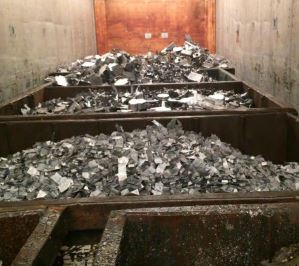Manufacturing with Die Casting: An Eco-Friendly Option
Leave a CommentAs consumers become more environmentally conscious and demand grows for green initiatives, manufacturers and original equipment manufacturers (OEMs) are increasingly seeking to offer eco-friendly manufacturing processes and sustainable product options.
Of all of the modern manufacturing methods available today, die casting, in particular, is one of the most efficient and environmentally friendly processes. In fact, some of the highest-quality die casting materials are completely recyclable. Effectively meeting the tenets of the “reduce, reuse, and recycle” approach, die casting provides reliable results for a wide range of industries.
Reduce
Many metal casting methods necessitate a sand mold, which can only be used once and must be repressed for every casting. This uses a tremendous amount of energy — as much as 7% of all energy required by these processes. Die casting, by contrast, uses a die. While more difficult to manufacture, dies can be used 100,000 times or more before needing to be replaced.
This energy-efficient process thereby produces a much smaller carbon footprint than other manufacturing methods.
Reuse
 When a die casting die has finally reached the end of its useful lifespan, it doesn’t need to be discarded or even recycled. Instead, dies can be shipped to specialty mills for retooling to accommodate different, slightly larger products. Dies can also be fully recast, and even in direct recasting scenarios, minimal processing is required, helping to reduce the carbon footprint and keep raw material use low.
When a die casting die has finally reached the end of its useful lifespan, it doesn’t need to be discarded or even recycled. Instead, dies can be shipped to specialty mills for retooling to accommodate different, slightly larger products. Dies can also be fully recast, and even in direct recasting scenarios, minimal processing is required, helping to reduce the carbon footprint and keep raw material use low.
Recycling
The materials used in die casting are easily recyclable. Aluminum, the most commonly used metal in die casting, is cost effective, energy efficient, and easy to recycle. Also, aluminum die extrusion — a recycling method that does not require melting, as most others do — produces high yields of usable material while requiring very little energy input.
In 2003, well over 50% of new aluminum production in the United States came from recycled aluminum, and today, virtually every die cast product contains some post-consumer recycled aluminum. In fact, as many as 95% of aluminum die casts use nothing but recycled material.
Aside from keeping costs down, reducing carbon footprints, and preventing tons of material from ending up in landfills, the high recyclability of die cast aluminum also helps limit the frequency of active mining.
How to Learn More
The North American Die Casting Association (NADCA) is the largest die casting organization in the continent, representing die casters across the United States, Canada, and Mexico. Proudly advocating on behalf of the industry, we offer an extensive library of industry resources and comprehensive training programs.
To learn more about the environmental benefits of die casting, download our new eBook, Die Casting: Efficient Manufacturing.




